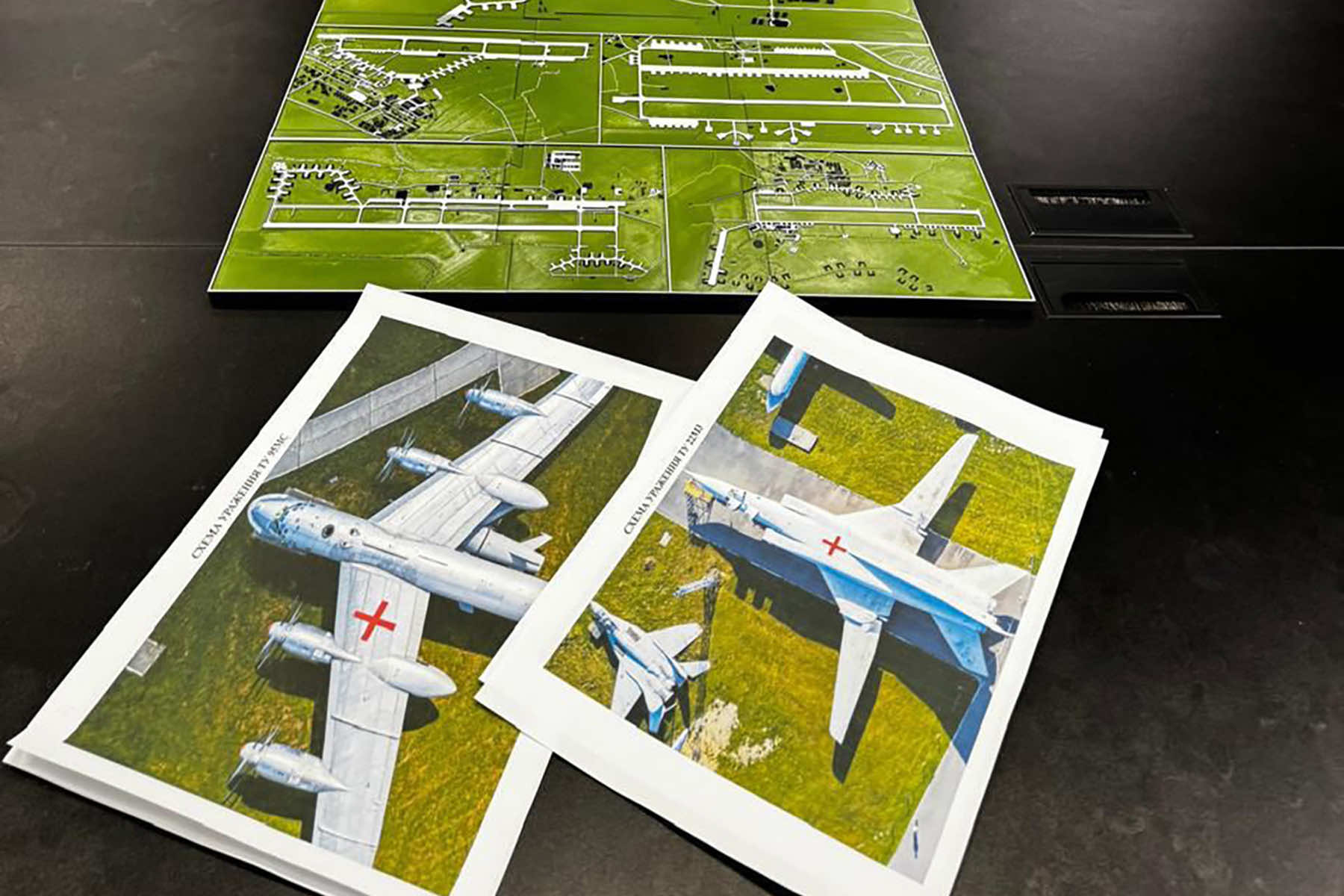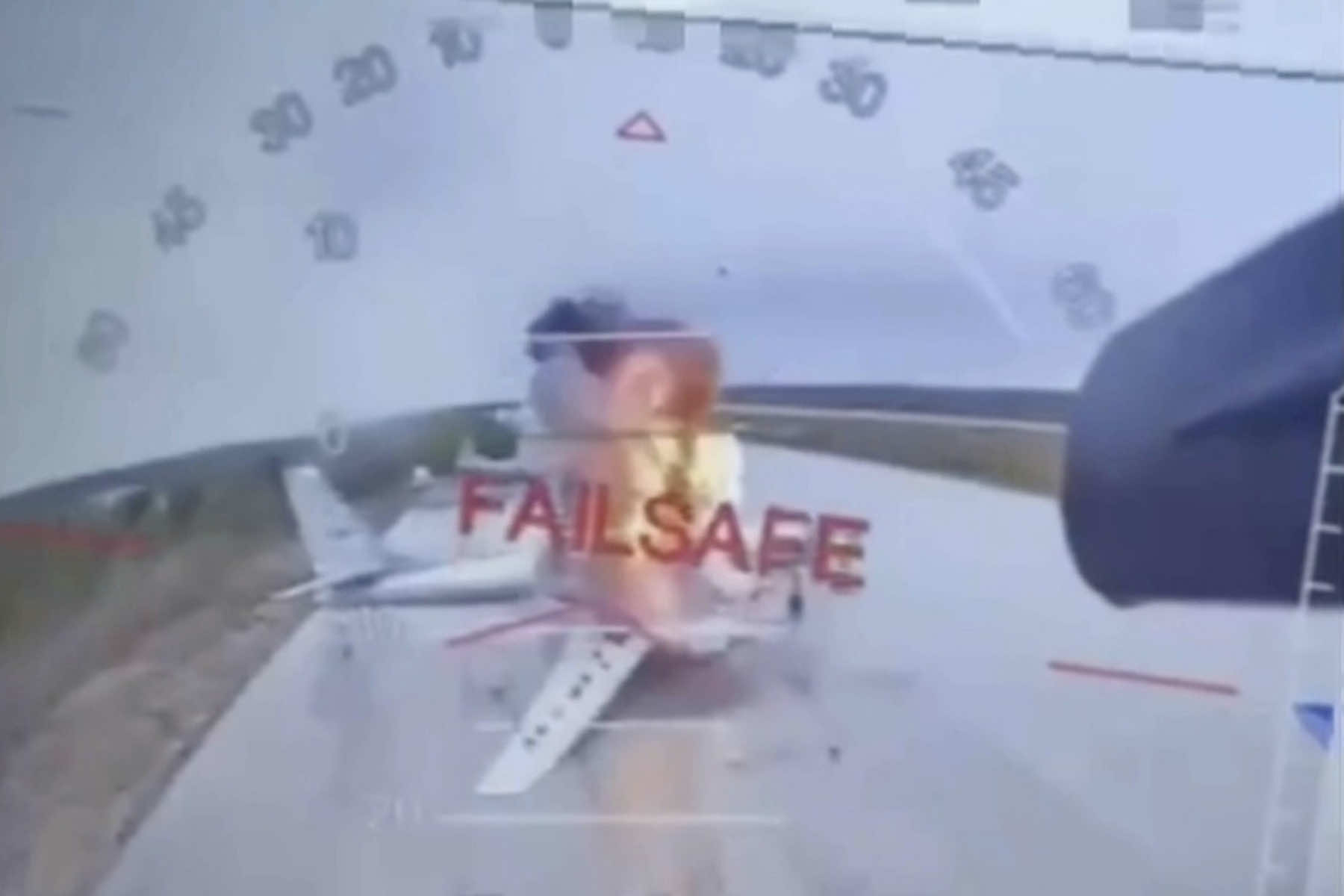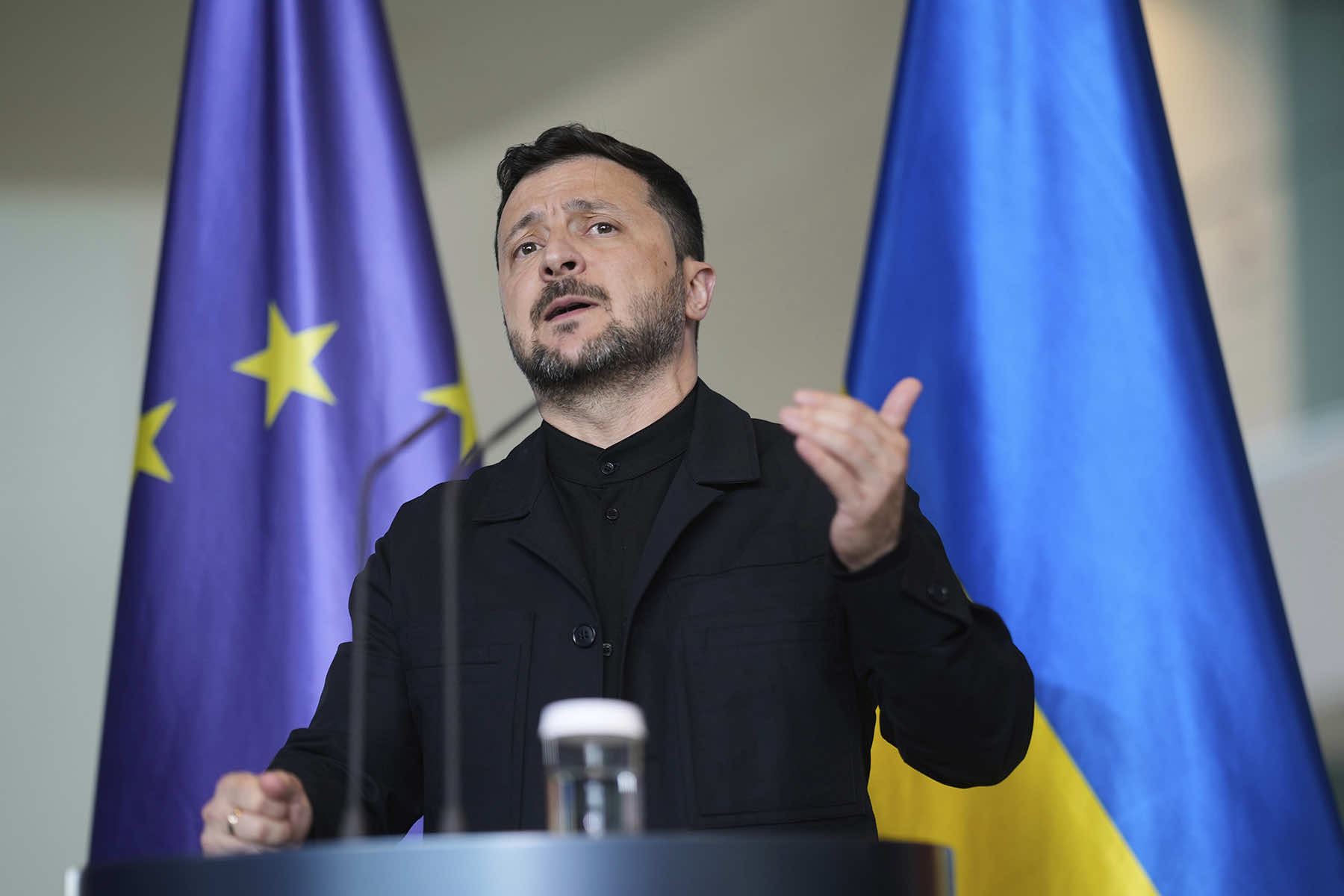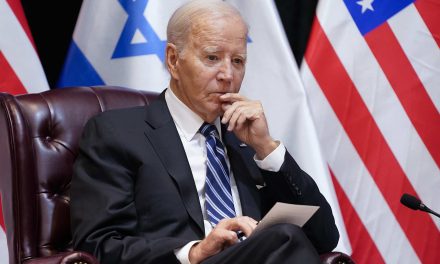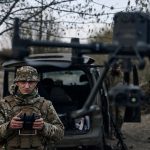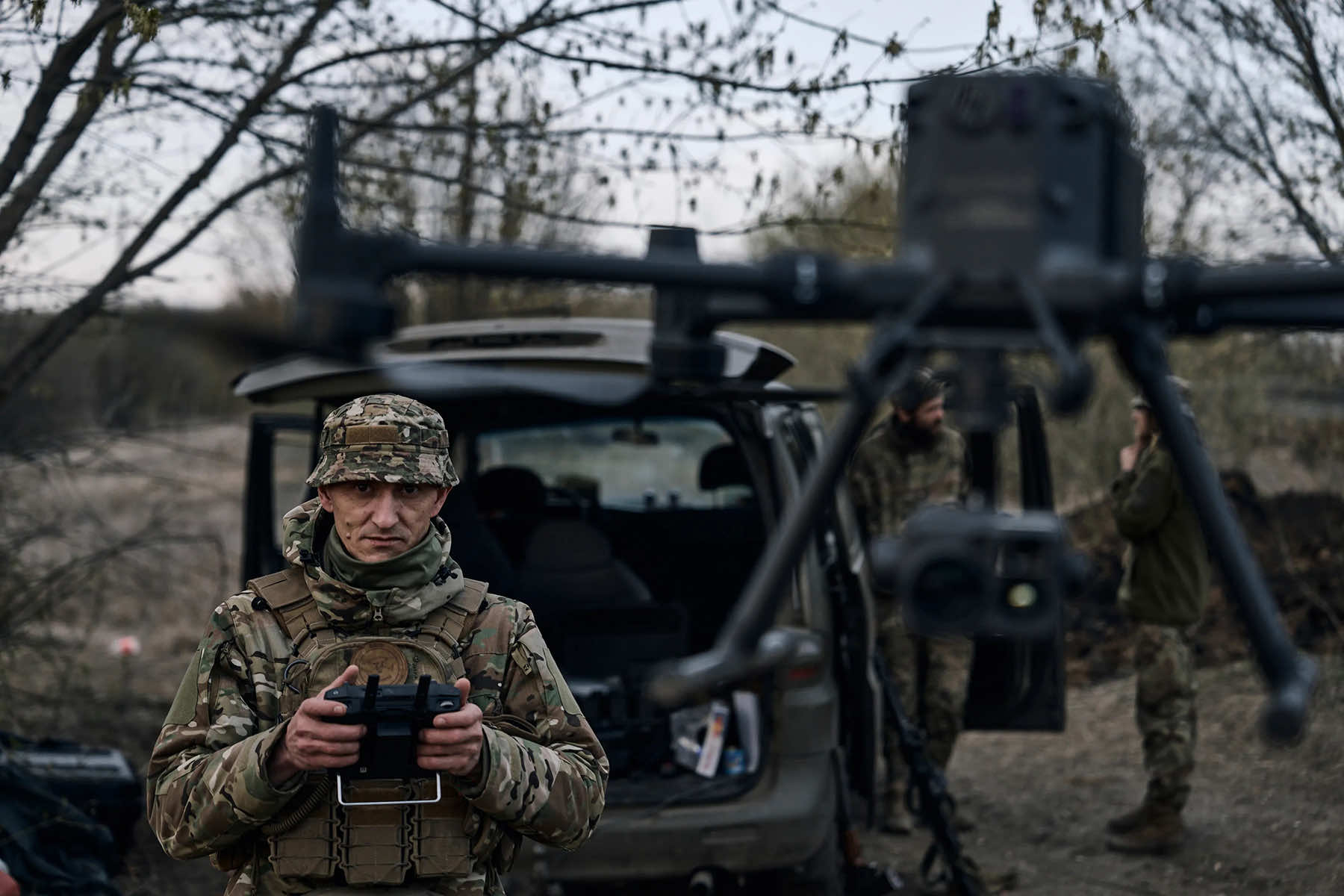
A Ukrainian drone attack has destroyed more than 40 Russian planes deep in Russia’s territory, Ukraine’s Security Service said on June 1, while Moscow pounded Ukraine with missiles and drones just hours before a new round of direct peace talks in Istanbul.
A military official, who spoke with the Associated Press on condition of anonymity to disclose operational details, said the far-reaching attack took more than a year and a half to execute and was personally supervised by Ukrainian President Volodymyr Zelenskyy.
In his evening address, Zelenskyy said that 117 drones had been used in the operation. He claimed the operation had been headquartered out of an office next to the local FSB headquarters. The FSB is the Russian intelligence and security service.
The military source said it was an “extremely complex” operation, involving the smuggling of first-person view, or FPV, drones to Russia, where they were then placed in mobile wooden houses.
“Later, drones were hidden under the roofs of these houses while already placed on trucks. At the right moment, the roofs of the houses were remotely opened, and the drones flew to hit Russian bombers,” the source said.
Social media footage shared by Russian media appeared to show the drones rising from inside containers while other panels lay discarded on the road. One clip appeared to show men climbing onto a truck in an attempt to halt the drones.
Roman Sheremeta, an associate professor of economics at Case Western Reserve University, said Ukraine’s decision to publicly disclose extensive details about Operation Spiderweb was a calculated act of psychological warfare.
“Much of this information would have eventually come to light,” Sheremeta wrote in a social media post. “The scale and precision of the operation — damaging or destroying over 40 aircraft across four separate Russian airbases — meant that Russian authorities, media, and satellite imagery analysts would piece it together. Trying to conceal the operation would have been futile.”
But the deliberate transparency, he argued, went far beyond inevitability. It was strategic.
“By revealing how the operation was executed — including the use of concealed drones inside decoy trucks driven across 5,000 kilometers of Russian territory — Ukraine isn’t just celebrating a tactical success. It’s imposing a psychological and economic cost on Russia,” he said.
According to Sheremeta, the implications go deeper than destroyed airframes. He described how the disclosure forces Russia into a defensive posture within its own borders. Every cargo truck was a possible threat, every driver was a potential saboteur. The result was a multi-layered disruption of domestic logistics and trust, a form of asymmetric warfare that targets infrastructure, morale, and perception.
“This will drive up the cost of Russian supply chains, strain already stretched infrastructure, and potentially cause internal friction,” Sheremeta said. “Ukraine didn’t just destroy aircraft — it weaponized uncertainty within the Russian system.”
LONG-RANGE BOMBERS TARGETED
The drones hit 41 planes stationed at military airfields on June 1, including A-50, Tu-95, and Tu-22M aircraft, the official said. Moscow has previously used Tupolev Tu-95 and Tu-22 long-range bombers to launch missiles at Ukraine, while A-50s are used to coordinate targets and detect air defenses and guided missiles.
The aircraft struck in the operation were not ordinary military planes but core components of Russia’s long-range strike capabilities. The Tu-95 and Tu-22M3 bombers have been repeatedly used to launch cruise missiles at Ukrainian cities, energy infrastructure, and military positions from deep within Russian territory, far beyond the reach of most Ukrainian defenses.
The A-50 aircraft, while not a bomber, serves as an airborne command center that coordinates missile strikes, detects Ukrainian air defenses, and tracks drone activity in real time.
By targeting these high-value assets, Ukraine aimed to disrupt Russia’s ability to carry out coordinated missile attacks and diminish its advantage in surveillance and command-and-control abilities.
The Security Service of Ukraine said that the operation, which it codenamed “Web”, had destroyed 34% of Russia’s fleet of air missile carriers with damages estimated at $7 billion.
Russia’s Defense Ministry in a statement confirmed the attacks, which damaged aircraft and sparked fires on air bases in the Irkutsk region, more than 2,500 miles from Ukraine, as well as the Murmansk region in the north, it said. Strikes were also repelled in the Amur region in Russia’s Far East and in the western regions of Ivanovo and Ryazan, the ministry said.
Also on June 1, Russia’s top investigative body said that explosions had caused two bridges to collapse and derailed two trains in western Russia overnight, killing seven in one of the incidents and injuring dozens more. Russian officials, however, did not say what had caused the blasts, and the word “explosions” was later removed from an Investigative Committee press release.
ATTACK AHEAD OF TALKS
The drone attack came the same day as Zelenskyy said Ukraine will send a delegation to Istanbul for a new round of direct peace talks with Russia on June 2.
In a statement on Telegram, Zelenskyy said that Defense Minister Rustem Umerov will lead the Ukrainian delegation. “We are doing everything to protect our independence, our state and our people,” Zelenskyy said.
Ukrainian officials had previously called on the Kremlin to provide a promised memorandum setting out its position on ending the war before the meeting takes place. Moscow had said it would share its memorandum during the talks.
RUSSIAN STRIKE HITS AN ARMY UNIT
Russia on June 1 launched 472 drones at civilian areas in Ukraine, the largest number since the full-scale invasion in February 2022, Ukraine’s air force said.
Russian forces also launched seven missiles alongside the barrage of drones, said Yuriy Ignat, head of communications for the air force. Earlier on June 1, Ukraine’s army said at least 12 Ukrainian service members were killed and more than 60 were injured in a Russian missile strike on an army training unit.
Ukrainian army commander Mykhailo Drapatyi later on June 1 submitted his resignation following the attack. He was a respected commander whose leadership saw Ukraine regain land on the eastern front for the first time since Kyiv’s 2022 counteroffensive.
The training unit was located to the rear of the 620-mile active front line, where Russian reconnaissance and strike drones are able to strike. Ukraine’s forces lack troops and take extra precautions to avoid mass gatherings as the skies across the front line are saturated with Russian drones looking for targets.

